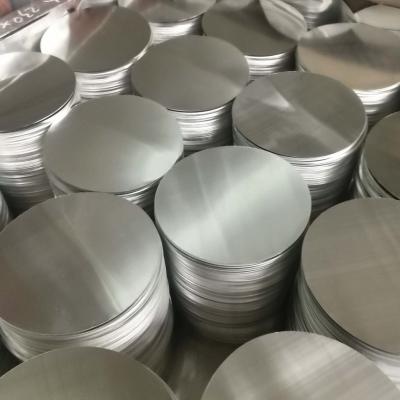The Role of 5052 Aluminum Circle in the Automotive Industry
-
The modern automotive industry is in the midst of a revolutionary shift, heavily focused on efficiency, sustainability, and performance. At the heart of this transformation is the strategic use of advanced materials, and aluminum alloys are leading the charge. Among them, the 5052 aluminum circle has emerged as a critical component, particularly in the creation of complex, formed parts. This blog explores the specific benefits and growing uses of 5052 aluminum circles that are helping to build the lighter, safer, and more efficient vehicles of today and tomorrow.
Why 5052 Aluminum Circle is a Perfect Fit for Automotive Needs
Not all aluminum is created equal. The 5052 alloy, supplied in a convenient circle form for stamping and spinning, offers a unique property set that aligns perfectly with automotive engineering challenges:
Excellent Strength-to-Weight Ratio: This is the single most important factor. 5052 aluminum is stronger than many other aluminum alloys like 1100 or 3003, while still being significantly lighter than steel. Reducing a vehicle's weight directly improves fuel efficiency and reduces battery drain in electric vehicles (EVs), extending their driving range.
Superb Formability: 5052 aluminum circles can be deep-drawn, spun, and stamped into complex, deep shapes without tearing or cracking. This allows manufacturers to create intricate components with sharp contours and deep recesses, which is essential for many automotive parts.
Outstanding Corrosion Resistance: Vehicles are exposed to a harsh world of road salt, humidity, and chemical sprays. The magnesium content in 5052 gives it superior resistance to corrosion, especially from saltwater, ensuring parts last longer and maintain their structural integrity and appearance.
Good Surface Finish: The surface of 5052 aluminum is ideal for a variety of automotive finishes, including painting, powder coating, and anodizing. This ensures parts not only perform well but also meet the high aesthetic standards of the industry.
Recyclability: As the industry pushes for a circular economy, aluminum's 100% recyclability without loss of properties is a massive advantage. Using 5052 aluminum supports sustainable manufacturing practices and helps automakers reduce their environmental footprint.
Key Applications of 5052 Aluminum Circles in Vehicles
The properties of 5052 aluminum circles translate into a wide array of specific components throughout a vehicle:
1. Fuel Tanks and EV Battery Enclosures
Traditional Vehicles: 5052's corrosion resistance is crucial for fuel tanks, preventing reactions with fuel and moisture. Its formability allows for the creation of complex, space-efficient tank designs that fit into a vehicle's unibody structure.
Electric Vehicles (EVs): This is a rapidly growing application. 5052 circles are deep-drawn to form protective enclosures and housings for EV battery packs. These enclosures must be strong to protect the sensitive batteries from impact, corrosion-resistant to handle road spray, and lightweight to avoid penalizing the vehicle's range.
2. Wheel Hub Caps and Decorative Trims
The aesthetic appeal of a vehicle is paramount. 5052 aluminum circles are stamped and spun into stylish wheel hub caps and various interior and exterior trim pieces. Their excellent surface finish ensures a flawless chrome look or painted surface, while their durability protects against chips and scratches from road debris.
3. Engine Components and Heat Shields
Under the hood, 5052 is used for non-critical engine parts and covers where weight savings and heat dissipation are beneficial. Its good thermal conductivity also makes it suitable for heat shields, which protect other components from excessive engine heat.
4. Structural Body Panels and Inner Doors
While high-strength alloys like 6061 or 7000-series are used for primary structures, 5052 finds its place in inner door panels, trunk floors, and other secondary structural elements. Its formability allows for the creation of complex, stiffening shapes that contribute to the overall rigidity and crash safety of the passenger cabin without adding excessive weight.
5. Sensor Housings and Electrical Components
As vehicles become "computers on wheels," the number of sensors and electronic control units (ECUs) has exploded. 5052 circles are stamped into robust, shielded housings for these sensitive devices, protecting them from the harsh automotive environment and electromagnetic interference.
Conclusion: A Material Driving the Future
The 5052 aluminum circle is far more than just a piece of metal; it is an enabling technology for the automotive industry's evolution. By contributing to significant weight reduction, enhancing corrosion resistance, and allowing for the complex geometries required by modern design, it plays a pivotal role in improving fuel economy, extending EV range, and increasing vehicle longevity. As the push for cleaner, smarter, and safer transportation intensifies, the demand for high-performance, versatile materials like the 5052 aluminum circle will only accelerate, solidifying its position as a key driver of automotive innovation.
